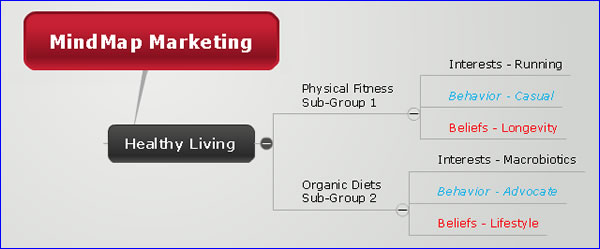One of the lesser-known applications of mind mapping software is to utilize it to develop your company’s marketing messages. Why would you want to do that, you may be asking yourself? Can’t you just start writing copy based upon your customer’s needs and your product’s benefits?
Not so fast. When it comes to influencing a prospect to buy your product or service, it’s best to know more about what motivates them. For that reason, it makes sense to map out the interests, behaviors and beliefs of your target customers – in essence, to create a detailed persona of your ideal customer. So says a recent article in Website Magazine.
One of the common problems of many marketing campaigns is that they treat prospective customers as if they are one monolithic group of people, with identical interests, behaviors and beliefs. This approach tends to result in lukewarm marketing messages that aren’t very persuasive – and ultimately don’t generate adequate sales. A much more effective tactic is to subdivide your target audience into sub-groups, based upon demographics and the three aforementioned criteria, as shown in the example mind map above. This gets you much closer to your prospect’s “hot buttons” – enabling you to develop customized messages that are much more tightly aligned with the needs of each sub-group. And if you’re successful in doing that, your campaigns will probably generate better sales results.
Here’s another thought, which the article doesn’t cover: If your job involves the development of online or offline communications, one dominant school of thought says that you should relentlessly “A/B test” it. In other words, create two different versions of the message, varying one factor (such as an e-mail subject or call to action) and then send each version to a small sub-set of your target audience and measure the results. In Darwinian fashion, the version that performed better will survive, while the one that didn’t work as well is discarded. A mind map is an excellent way to develop your A/B messaging, and to show a side-by-side comparison of the elements and variations you plan to vary as part of your testing process.
You can use this visually-based prospect definition method to drive the messaging for your organization’s web pages, e-mails and other online and print campaigns. If you work for a marketing communications agency, a messaging mind map can be quite useful for developing your marketing plans and tactics, as well as an engaging tool for showing your thinking to your client.


Leave a Reply